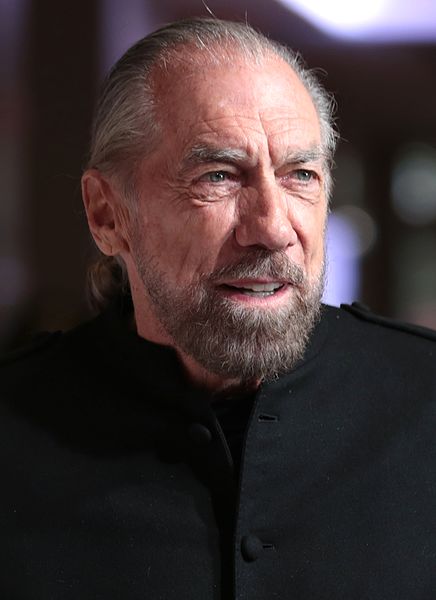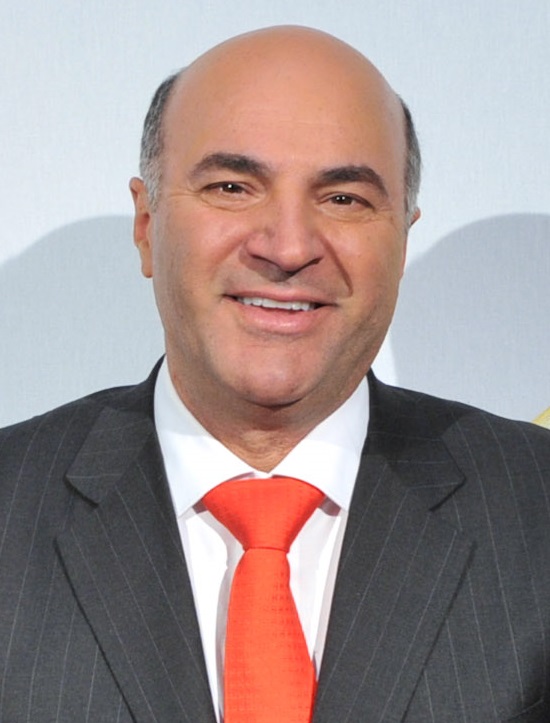The Legacy of Tony Hsieh: Lessons in Leadership and Entrepreneurship

Exploring the Life and Leadership of Tony Hsieh
Tony Hsieh was an American entrepreneur, business magnate, and venture capitalist. He was the CEO of the online shoe and clothing company Zappos, which he helped grow from a small startup to a billion-dollar enterprise. Hsieh’s unconventional leadership style and unique approach to business garnered him widespread recognition and admiration in the business world.
As a leader, Hsieh was known for his emphasis on company culture, customer service, and personal fulfillment. He believed that happy employees and customers were the keys to a successful business, and he worked tirelessly to create an environment where both could thrive. Hsieh’s legacy extends far beyond his success at Zappos; he was a thought leader, a mentor, and an inspiration to many.
Personal stories of successful leaders like Hsieh provide valuable insights into the principles and practices that lead to success. By studying the leadership styles of great leaders, we can gain a better understanding of what it takes to succeed in business and in life. Personal stories allow us to see the human side of leadership, to understand the motivations, challenges, and triumphs that shape a leader’s journey.
This article will explore the leadership lessons and stories of Tony Hsieh, with the aim of providing readers with a deeper understanding of what made him such an effective leader. We will examine his early life and career, his leadership at Zappos, and the impact he had on the business world. Through personal reflections and analysis, we will distill the key principles and practices that Hsieh used to build a successful business and become a respected leader. By the end of this article, readers will have a clear understanding of Hsieh’s legacy and the leadership lessons that can be gleaned from his life and work.
Tony Hsieh’s Early Life and Career
Tony Hsieh was born in Illinois in 1973 to Taiwanese immigrants. As a child, he was drawn to entrepreneurship and started his first business, a worm farm, at the age of nine. Hsieh’s early interest in business led him to pursue a degree in computer science at Harvard University.
After graduation, Hsieh worked as a software engineer at Oracle Corporation, where he developed a software program that would later become the foundation of LinkExchange, an online advertising network. In 1996, Hsieh co-founded LinkExchange with Sanjay Madan, and the company grew rapidly, eventually reaching 400,000 members and earning $25 million in annual revenue.
In 1998, Hsieh sold LinkExchange to Microsoft for $265 million, but he soon became dissatisfied with his role at the company. He left Microsoft in 1999 and joined Venture Frogs, an investment firm he had co-founded with his friend, Alfred Lin. Together, Hsieh and Lin invested in a number of startups, including Zappos.
Hsieh’s experiences as an entrepreneur and investor taught him the importance of taking risks and embracing failure. He learned that success often comes from trying new things and being willing to pivot when things don’t go as planned. These lessons would later shape his leadership style at Zappos.
In 2000, Hsieh became the CEO of Zappos, an online shoe retailer that was struggling to gain traction in the market. Hsieh was initially skeptical about the company’s potential, but he saw an opportunity to create a customer-centric organization that could disrupt the traditional retail industry. Under Hsieh’s leadership, Zappos would become one of the most successful e-commerce companies in the world.
Hsieh’s early experiences as an entrepreneur and investor laid the foundation for his leadership at Zappos. He understood the importance of taking risks and being willing to fail, and he brought this mindset to his work at Zappos. His entrepreneurial spirit and willingness to try new things would be key to the company’s success.
Hsieh’s Leadership at Zappos
As the CEO of Zappos, Hsieh was a hands-on leader who was deeply involved in every aspect of the company. He believed that a successful business was built on a strong culture and a commitment to customer service, and he worked tirelessly to create an environment where both could thrive.
Hsieh’s leadership style was characterized by a combination of vision, empathy, and transparency. He had a clear vision of what he wanted Zappos to be and worked tirelessly to make that vision a reality. He also had a deep empathy for his employees and customers, which led him to prioritize their needs and well-being above all else. Finally, he was transparent in his communication and decision-making, which earned him the trust and loyalty of those around him.
One of Hsieh’s most significant contributions to Zappos was his focus on company culture. He believed that a strong culture was essential to building a successful business, and he worked tirelessly to create a culture that was both inclusive and inspiring. Hsieh’s approach to culture was based on the belief that happy employees lead to happy customers, and he was dedicated to creating an environment where both could thrive.
To build a strong culture, Hsieh implemented a number of unique management strategies. For example, he instituted a policy that required all new employees to undergo an intensive training program that included a focus on company values and culture. He also created a set of ten core values that served as the foundation for the company’s culture, including “Deliver WOW Through Service” and “Embrace and Drive Change.”
Hsieh’s commitment to customer service was also a critical component of his leadership at Zappos. He believed that by putting the customer first, the company could create a loyal customer base that would be essential to its success. To that end, Hsieh instituted a number of policies and practices that prioritized customer service, including free shipping and a 365-day return policy.
In addition to his focus on culture and customer service, Hsieh was also known for his unique management style. He believed in empowering his employees and giving them the freedom to experiment and innovate. He also valued transparency and honesty, which meant that he was always open to feedback and criticism.
Overall, Hsieh’s leadership at Zappos was characterized by his commitment to building a strong culture, prioritizing customer service, and empowering his employees. His approach to management was based on the belief that happy employees and customers were the keys to a successful business, and he worked tirelessly to create an environment where both could thrive.
Lessons Learned from Hsieh’s Leadership
Tony Hsieh’s leadership at Zappos has left a lasting impact on the business world, with many lessons to be learned from his approach to leadership. Here are some of the key lessons that can be gleaned from his life and work.
One of the most important lessons that can be learned from Hsieh’s leadership is the importance of company culture and values. Hsieh believed that a strong culture was essential to building a successful business, and he worked tirelessly to create a culture that was inclusive, inspiring, and aligned with the company’s values. By prioritizing culture, Hsieh was able to create a company that was united around a common purpose and committed to delivering exceptional customer service.
Leading with a purpose is another key lesson that can be learned from Hsieh’s leadership. Hsieh believed that a successful business was about more than just making money; it was about making a difference in people’s lives. He was committed to building a company that was driven by a higher purpose and focused on making a positive impact on the world. By leading with a purpose, Hsieh was able to inspire his employees and create a culture that was committed to making a difference.
Building a customer-centric organization is another lesson that can be learned from Hsieh’s leadership. Hsieh believed that by putting the customer first, a company could create a loyal customer base that would be essential to its success. He instituted policies and practices that prioritized customer service, such as free shipping and a 365-day return policy, and he was dedicated to creating a culture that was focused on delivering exceptional customer experiences.
Taking risks and embracing failure is another lesson that can be learned from Hsieh’s leadership. Hsieh was a risk-taker who was willing to try new things and embrace failure. He believed that failure was an essential part of the learning process and that success often came from trying new things and being willing to pivot when things didn’t go as planned. By embracing failure, Hsieh was able to take risks and innovate in ways that led to Zappos’ success.
Finally, balancing business and personal fulfillment is another lesson that can be learned from Hsieh’s leadership. Hsieh believed that personal fulfillment was just as important as business success, and he was dedicated to creating a culture that supported both. He encouraged his employees to pursue their passions and hobbies, and he believed that a happy and fulfilled workforce was essential to building a successful business.
Tony Hsieh’s leadership at Zappos provides many valuable lessons for current and future leaders. By prioritizing culture and values, leading with a purpose, building a customer-centric organization, embracing failure, and balancing business and personal fulfillment, Hsieh was able to build a successful business and leave a lasting impact on the business world.
Hsieh’s Impact on the Business World
Tony Hsieh’s leadership at Zappos had a profound impact on the business world. Zappos became one of the most successful e-commerce companies in the world, and Hsieh’s approach to leadership and management inspired many other entrepreneurs and business leaders.
Zappos’ success is a testament to Hsieh’s leadership and vision. Under Hsieh’s leadership, Zappos grew from a struggling startup to a billion-dollar enterprise. The company’s success was due in large part to Hsieh’s focus on creating a strong company culture and delivering exceptional customer service. Zappos’ success inspired many other e-commerce companies to adopt similar approaches to culture and customer service, and it continues to be studied and emulated by entrepreneurs and business leaders around the world.
Hsieh’s influence on business and leadership thinking extends far beyond Zappos. Hsieh was a thought leader and mentor to many, and his ideas about company culture, customer service, and personal fulfillment have influenced business and leadership thinking in numerous industries. Hsieh’s emphasis on building a customer-centric organization and creating a strong culture has become a cornerstone of modern business thinking, and his legacy continues to inspire entrepreneurs and business leaders around the world.
Hsieh’s legacy as a leader and entrepreneur is perhaps his most significant contribution to the business world. Hsieh was a true innovator who was unafraid to take risks and challenge the status quo. He believed that business could be a force for good in the world, and he worked tirelessly to create a company that was driven by a higher purpose. Hsieh’s legacy continues to inspire entrepreneurs and business leaders to think differently about what it means to be successful in business.
Tony Hsieh’s impact on the business world is difficult to overstate. Zappos’ success and Hsieh’s influence on business and leadership thinking have inspired countless entrepreneurs and business leaders around the world. Hsieh’s legacy as a leader and innovator will continue to be studied and celebrated for years to come, and his ideas about culture, customer service, and personal fulfillment will continue to shape the way we think about business and leadership.
The Enduring Impact of Tony Hsieh’s Leadership Legacy
Tony Hsieh was a remarkable leader and entrepreneur whose impact on the business world continues to be felt today. Through his leadership at Zappos and his contributions to business and leadership thinking, Hsieh left a lasting legacy that will continue to inspire entrepreneurs and business leaders for years to come.
Throughout this article, we have explored Hsieh’s early life and career, his leadership at Zappos, and the impact he had on the business world. We have examined the key principles and practices that made him such an effective leader, including his focus on company culture, customer service, and personal fulfillment. We have also explored the lessons that can be learned from Hsieh’s leadership, including the importance of building a strong culture, leading with a purpose, and balancing business and personal fulfillment.
Studying leadership through personal stories, such as those of Tony Hsieh, provides valuable insights into what it takes to be an effective leader. Personal stories allow us to see the human side of leadership and to understand the motivations, challenges, and triumphs that shape a leader’s journey. By studying the leadership styles of great leaders, we can gain a better understanding of what it takes to succeed in business and in life.
In conclusion, Tony Hsieh’s legacy as a leader and entrepreneur is a testament to the power of vision, empathy, and transparency. His commitment to building a strong culture, delivering exceptional customer service, and leading with a purpose has inspired countless entrepreneurs and business leaders around the world. Hsieh’s approach to leadership and management is a model for current and future leaders who seek to make a positive impact on the world through their work.





